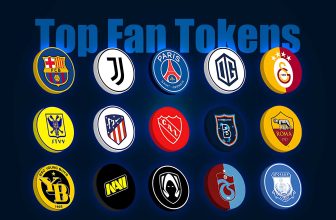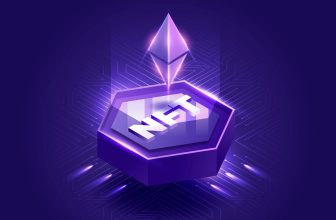The realm of blockchain technology has witnessed a remarkable metamorphosis since the advent of Bitcoin – the trailblazer amongst all digital currencies. This groundbreaking tech brought to life the notion of consensus protocols, with Proof of Work (PoW) commanding significant prominence.
PoW has sparked the genesis of numerous tokens, aptly known as PoW tokens, which are diligently mined by a specialized group of users, referred to as miners.
Understanding Proof of Work (PoW) Tokens
At its core, PoW is a consensus mechanism applied within blockchain engineering where miners pit themselves against one another to unravel sophisticated mathematical challenges. The miner who resolves the puzzle first is privileged to introduce a fresh block to the blockchain and is consequently rewarded with a token. Tokens garnered in this manner are recognized as PoW tokens.
The Market Landscape
The crypto arena is characterized by its high-velocity nature, with a plethora of PoW tokens occupying key positions. A token’s market capitalization and trading volumes serve as crucial barometers of its acclaim and liquidity.
At present, the market capitalization of leading PoW tokens is an astonishing $620,176.82M, operating at a trading volume of $9,007.67M. Even in the face of a -21.99% downturn in trading volume, the market cap has experienced a growth spurt of +1.39%.
The Top PoW Tokens by Market Capitalization
Let’s take a look at the top PoW tokens by market capitalization:
Bitcoin (BTC)
Bitcoin (BTC) is the first and most well-known cryptocurrency. It was created by an anonymous person or group of people using the pseudonym Satoshi Nakamoto. Bitcoin operates on a decentralized network and uses PoW consensus to validate transactions. As of now, Bitcoin holds the highest market capitalization among all cryptocurrencies.
Dogecoin (DOGE)
Dogecoin (DOGE) started as a meme cryptocurrency but has gained a massive following and market capitalization. It uses the Scrypt algorithm for mining and has a relatively faster block time than Bitcoin. Dogecoin gained widespread attention due to its active community and numerous charitable initiatives.
Litecoin (LTC)
Litecoin (LTC) was created by Charlie Lee, a former Google engineer. It is often referred to as the “silver” to Bitcoin’s “gold.” Litecoin offers faster transaction confirmation times and uses the Scrypt algorithm for mining. It has gained popularity as a payment method and has a substantial market capitalization.
Bitcoin Cash (BCH)
Bitcoin Cash (BCH) is a fork of Bitcoin that aims to provide faster and cheaper transactions. It increased the block size limit, allowing more transactions to be processed in each block. Bitcoin Cash operates on the same PoW consensus and has a significant market capitalization.
Monero (XMR)
Monero (XMR) is a privacy-focused cryptocurrency that uses the CryptoNight algorithm for mining. It provides enhanced privacy by obfuscating transaction details and hiding the participants’ identities. Monero’s commitment to privacy has made it popular among users who value anonymity.
Ethereum Classic (ETC)
Ethereum Classic (ETC) results from a hard fork in the Ethereum blockchain. It maintains the original Ethereum blockchain and philosophy, emphasizing immutability and decentralization. Ethereum Classic also uses PoW consensus and has its market capitalization separate from Ethereum.
Stacks (STX)
Stacks (STX) is a unique PoW cryptocurrency that operates on the Bitcoin blockchain. It enables smart contract functionality on Bitcoin and allows developers to build decentralized applications (dApps) on top of the Bitcoin network. Stacks has gained attention for its innovative approach to combining PoW and smart contracts.
Conflux Network (CFX)
Conflux Network (CFX) is a high-performance blockchain platform that utilizes a novel PoW consensus algorithm called Tree Graph. It aims to provide a secure and scalable infrastructure for decentralized applications. Conflux Network has attracted attention for its advanced technology and potential use cases.
IOTA (MIOTA)
IOTA (MIOTA) is a distributed ledger technology designed for the Internet of Things (IoT). It uses a unique consensus mechanism called the Tangle, which is a Directed Acyclic Graph (DAG) structure. IOTA’s PoW mechanism secures the network and enables feeless microtransactions between IoT devices.
Zcash (ZEC)
Zcash (ZEC) is a privacy-focused cryptocurrency that allows users to shield their transaction details. It offers both transparent and shielded transactions, providing users with the option to disclose or hide their transaction data. Zcash uses the Equihash algorithm for mining and has gained recognition for its privacy features.
Dash (DASH)
Dash (DASH) is a digital currency that aims to provide fast and private transactions. It offers features such as InstantSend and PrivateSend to facilitate quick and secure transactions. Dash operates on a two-tier network, with miners and masternodes working together to maintain the blockchain.
Zilliqa (ZIL)
Zilliqa (ZIL) is a high-throughput blockchain platform that utilizes sharding to improve scalability. It aims to provide a scalable and secure infrastructure for decentralized applications and smart contracts. Zilliqa’s PoW consensus enables efficient transaction processing and has garnered attention for its scalability solutions.
Ravencoin (RVN)
Ravencoin (RVN) is a blockchain platform designed for asset tokenization and transfer. It enables users to create and trade digital assets on the Ravencoin blockchain. Ravencoin’s PoW consensus ensures the security and immutability of asset transactions, making it suitable for various tokenization use cases.
Ankr (ANKR)
Ankr (ANKR) is a distributed computing platform that utilizes idle computing resources to power blockchain infrastructure. It aims to provide a cost-effective and efficient solution for deploying and running blockchain nodes. Ankr’s PoW mechanism incentivizes users to contribute their computing power to the network.
Decred (DCR)
Decred (DCR) is a community-driven cryptocurrency that emphasizes decentralization and governance. It uses a hybrid PoW/PoS (Proof of Stake) consensus mechanism, where stakeholders can participate in decision-making processes. Decred’s innovative governance model has attracted attention within the cryptocurrency community.
Siacoin (SC)
Siacoin (SC) is a blockchain-based cloud storage platform that enables users to rent and sell storage space. It uses PoW consensus to secure the network and facilitate storage-related transactions. Siacoin’s decentralized approach to cloud storage has the potential to disrupt traditional centralized storage providers.
Ontology (ONT)
Ontology (ONT) is a multi-chain blockchain platform that focuses on digital identity and data exchange. It aims to provide a framework for building and deploying various blockchain applications. Ontology’s PoW consensus ensures the security and integrity of its network and supports interoperability between different blockchains.
Kadena (KDA)
Kadena (KDA) is a hybrid blockchain platform that combines public and private blockchains. It offers scalable and secure solutions for businesses and developers. Kadena’s PoW consensusand its unique Chainweb architecture enable high throughput and interoperability across multiple chains.
Flux (FLUX)
Flux (FLUX) is a gaming-focused blockchain platform that enables the creation and trading of in-game assets. It aims to provide a decentralized and secure infrastructure for the gaming industry. Flux’s PoW consensus ensures the immutability and fairness of in-game transactions and asset ownership.
DigiByte (DGB)
DigiByte (DGB) is a decentralized blockchain platform prioritizing security, speed, and decentralization. It uses multiple mining algorithms to secure the network and achieve high transaction throughput. DigiByte has a strong community and has actively promoted blockchain technology.
Conclusion
As the cryptocurrency sphere continues its progression, PoW tokens will persist as an integral pillar of the decentralized panorama.
Frequently Asked Questions
What is a PoW token?
A PoW token is a type of cryptocurrency that miners earn as a reward for adding new blocks to a blockchain that uses a Proof of Work consensus algorithm.
What is the top PoW token by market capitalization?
As of now, Bitcoin (BTC) is the top PoW token by market capitalization.
How does a miner earn PoW tokens?
Miners earn PoW tokens by solving complex mathematical problems. The miner who solves the problem first adds the next block to the blockchain and receives a certain amount of tokens as a reward.
Why is Bitcoin considered a PoW token?
Bitcoin is considered a PoW token because it is mined through a process that uses the Proof of Work consensus algorithm.
Are all cryptocurrencies PoW tokens?
No, not all cryptocurrencies are PoW tokens. Only those cryptocurrencies that use the Proof of Work consensus algorithm and reward miners with tokens are considered PoW tokens.






